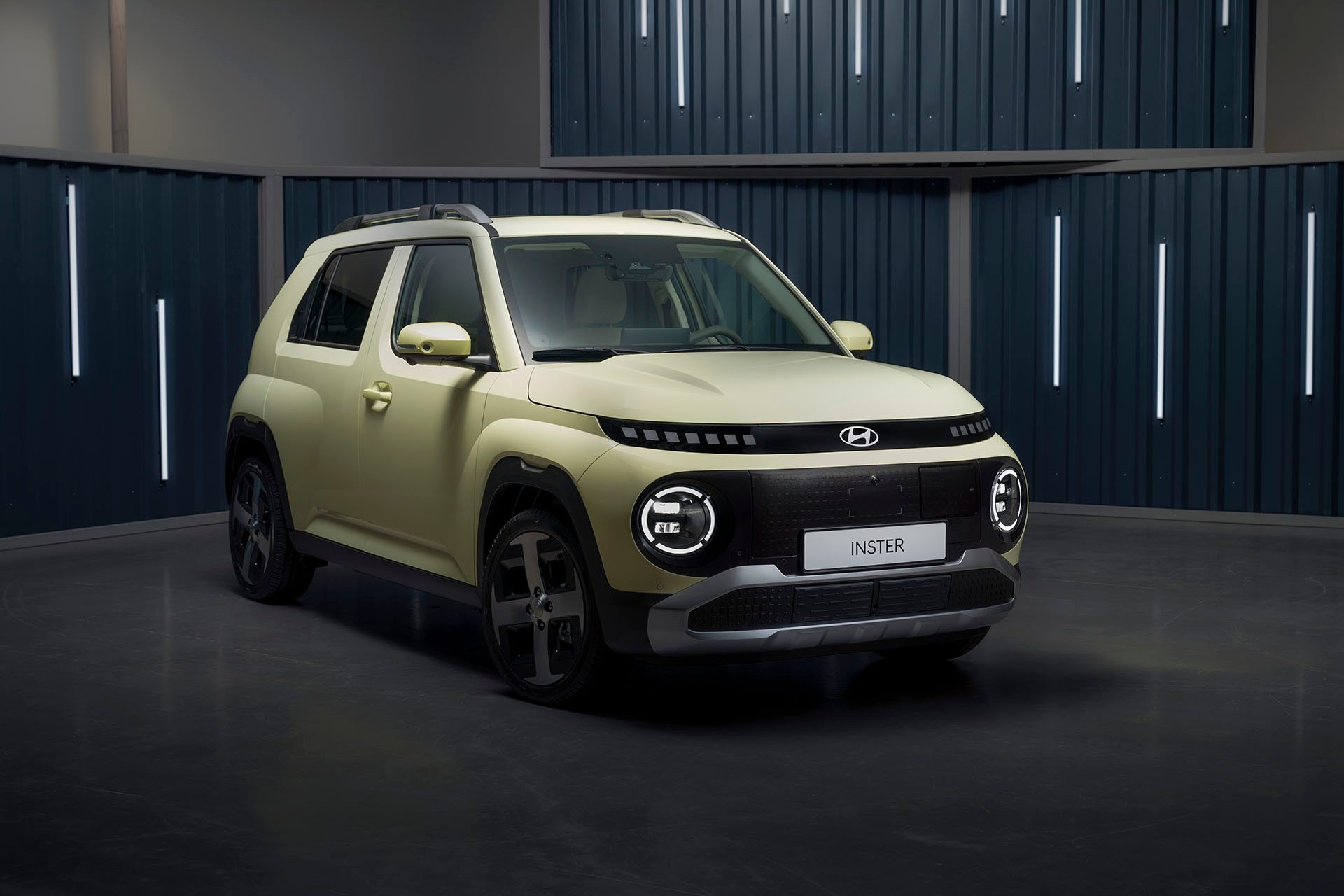Hyundai Says Inster EV Will Be Affordable
Words NZ Autocar | Images Hyundai
Measuring up at 3.8m long, 1.6m wide and 1.6m tall, Inster has in-towner transport writ large. However, it also happens to have battery range of 350km. Inster is currently being evaluated for New Zealand introduction. Overseas it is touted as an affordable electric city car with decent range.

As previewed last month, the car is based on the ICE power Hyundai Casper, a Korea-only car. Its platform is stretched by 230mm for Inster, mainly in the wheelbase. This improves both practicality and the available space for an underfloor battery pack.

Despite the car’s small footprint, Hyundai asserts that the Inster is as practical as its five-seat rivals. It features efficient packaging and a configurable interior. Each of its four seats can be folded completely flat. The two rear seats are also capable of sliding and reclining to enable more leg room or boot space as required.

Entry-level cars get a 72kW front motor that provides a 0-100km/h sprint time of 11.7sec. Paired with a 42kWh battery pack, its claimed range is 298km. The ‘long range’ Inster has 84kW on tap and its 49kWh battery gives it 347km of range, though its sprint time is still over 10sec.

Both use NMC battery chemistry and come with a heat pump. They can handle 85kW (DC) charging speeds.
Hyundai believes that Inster’s interior connectivity and on-board technologies are special selling points.

Both versions come with two 10.25in digital displays, and owners can use their smartphone as a ‘key’ to unlock and start the car.
Inster also comes with a 360-degree parking camera, adaptive cruise control and blindspot monitoring that projects a camera image of your rear quarter view onto the instrument panel as you indicate.

Two trim levels will be available when it goes on sale in 2025.
Standard kit includes the digital instrument panel, infotainment touchscreen, rear-view camera and automatic headlights. The sliding rear bench, flat-folding front seats and LED headlights are part of the 02 trim, which is a cost option in the UK.

“We believe we will start electrification…for the mass market,” said Paolo Gnerro, product planning manager for Hyundai Motor Europe.
Hyundai is targeting: “… the very young”, buying their first new cars and “empty-nesters…mainly in their 50s”, who want a second car for running errands.

Gnerro added that Inster would likely operate outside the traditional size-bound segments, pointing to changing customer behaviours with EVs.
For them, “a 350km-range [217-mile] car is comparable to another 350km car, no matter what the size is.”





